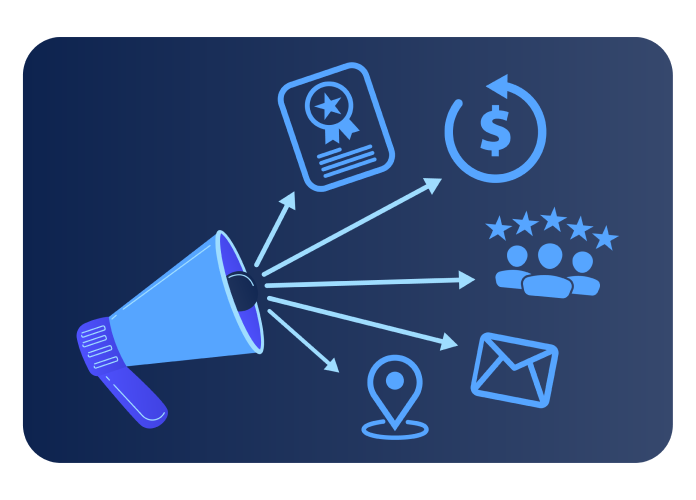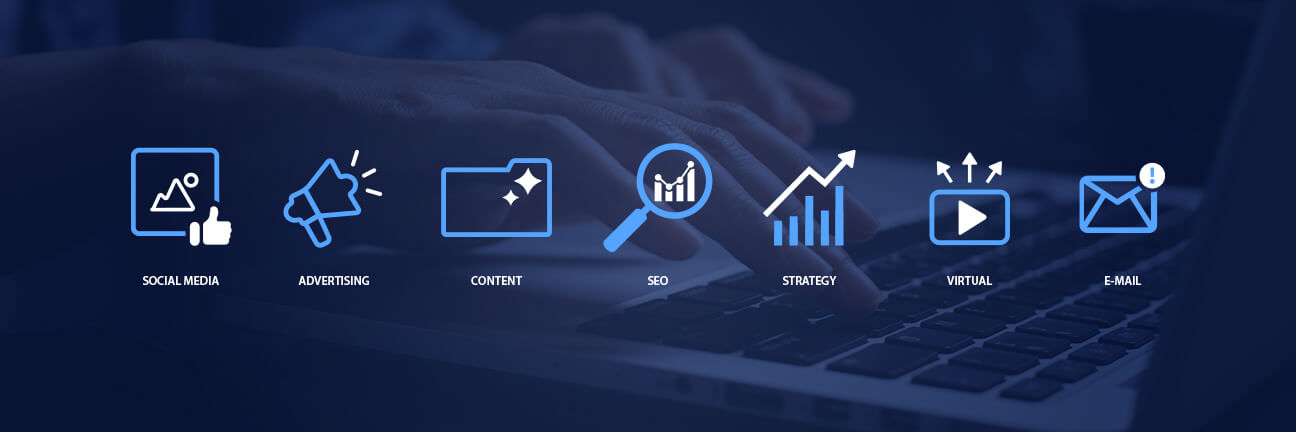Rehab facilities fill a critical role in their communities. Yet, as the need for their services continues to grow, so does the local competition. Standing out requires more than an eye-catching logo or a memorable tagline. These centers need to generate awareness, establish thought leadership, and, ultimately, earn the trust of the populations they want to serve.
To do so, they’re turning to multiple tactics from search engine optimization (SEO) and social media marketing to print flyers and radio ads. Today, we’re taking a look at some of the most common drug rehab marketing strategies and sharing the pros and cons of each.
Digital Marketing Channels
Around the world, the majority of working-age internet users hop online for one important reason: to find information. If you’re looking for a way to get your rehab facility in front of as many people as possible, digital marketing can get you there. Here are the top ways to advertise on the cyber frontier.

Search Engine Optimization
SEO is the process of improving your website so it shows up as high as possible on online search results. It involves several different steps, from strategic keyword usage and link placement to technical aspects like improving page load times.
Investing in this area is smart. Research reveals that websites on the first page of Google capture up to 92% of all search traffic. This is one of the quickest and most efficient ways to secure long-term visibility and get more eyes on your content. It’s also one of the most cost-effective options, especially if you have a few tech-savvy members on your team.
However, SEO can also be time-consuming. Some rehab centers may need to hire outside developers or digital marketing teams to take the reins, as well as writers. Google rewards sites that regularly share relevant, helpful content but this step can take a back seat to more mission-critical work. You’ll also be up against other companies that are looking to geo-target the same clients, so even local SEO can get competitive.
Learn more about SEO for drug rehabs.
Pay-Per-Click (PPC) Advertising
While SEO can drive organic traffic to your rehab site over time, pay-per-click (PPC) ads provide immediate visibility. With this approach, you’ll place your ad in a prominent online location, then pay a small fee each time a user clicks on it. Some of the most popular PPC platforms include Google Ads, LinkedIn, Facebook, and Pinterest.
Most platforms allow you to strategically target your ads based on user interests, location, demographics, and behaviors. If you’re budgeting, however, keep in mind that PPC advertising isn’t a one-time payment. You’ll incur ongoing costs until you decide to end the campaign. It also requires management, so you’ll need a dedicated team member who can create, launch, and monitor your promotion.
Learn more about PPC for drug rehabs.
Social Media Marketing
Connection and engagement are the cornerstones of drug rehab marketing. Social media can be an excellent, cost-effective way to build brand exposure, foster those relationships, and share helpful information about the services you offer. It’s also one of the quickest community building tools available because it allows you to connect in real time.
You can use your profile to share important news, talk about relevant topics, and even dispel some misconceptions that people might have about addiction treatment. Most facilities start with Facebook because it allows you to post longer-form content, host live sessions, and connect with a broad demographic. Instagram is more popular among younger adults and is great for sharing visual content like infographics and video testimonials. Other platforms include X (formerly known as Twitter), TikTok, LinkedIn, and Pinterest.
Of course, it can also be time-consuming to create and schedule your posts, respond to comments, and monitor your page for new activity. You’ll also need to stay up-to-date on the latest algorithm changes so your posts stay visible.
Email Marketing
Research shows that 88% of people check their inbox every day, and 39% check them three to five times daily. In lieu of direct mail marketing, some rehab centers choose to connect with potential clients through email instead.
This requires email list building, which you can do through an opt-in landing page on your website. Once you have all your contacts in place, you can use automation tools to personalize each message. This gives you the targeted reach of print media without the expense of traditional delivery.
Email marketing, when done properly, will yield a high ROI, as some reports show that email campaigns generate around $42 for every $1 spent. To get there, though, you’ll need to make sure your messages are safe and professional enough to bypass any spam filters that your recipients might have in place.
Additional Channels
In addition to traditional and digital marketing, there are a few other ways to build exposure around your rehab facility. The following strategies have the potential for impressive returns if you can find your voice and build the right connections.

Public Relations
A public relations campaign is a multi-faceted series of activities planned over time to improve brand awareness. You’ll start by developing key messages and then decide how and where you’ll share them. It can include a mix of in-person and online events, but the main focus is on building credibility, establishing trust, and positioning yourself as a thought leader in your space.
A major benefit of a PR effort is that it generates earned media. This is publicity or exposure that your brand gets from third-party sources for free. If a reputable news site talks about your campaign, for instance, you’ll expand your reach without any extra effort (or money) on your part. This kind of support is generally considered more trustworthy than paid media, which requires you to promote your content through sponsored platforms.
These campaigns can be time-consuming to create and effective PR requires strong relationships to pull off, but the outcome can be lucrative and rewarding.
Partnerships and Referrals
Choosing a rehab center is a personal decision. Prospective clients may be more willing to consider your facility if you’re aligned with another entity they already know and love. This is where partnerships and referrals come into play.
A non-competitive business may recommend your facility to their clients if you can offer an incentive in return. This is a cost-effective local marketing method that improves visibility and builds trust, especially in your direct community. However, it relies on external factors, like customer demand and economic stability, to be sustainable.
Content Marketing
As a leader in the drug rehab space, you have lots to say. You can share your insights through many channels, including podcasts, blogs, newsletters, and more. To stay relevant and engaged, it’s not enough to simply put words out there. You must make sure what you’re talking about is informative and engaging for your target listeners.
Over time, a strong content marketing strategy builds authority and attracts organic traffic. Yet, it can be time-consuming, especially when you’re creating longer pieces like white papers or guides. It also requires expertise to talk authoritatively about the topic at hand.
Traditional Marketing Channels
Even as digital media continues to surge, there’s still a place for traditional marketing. This is especially the case for small businesses that need to focus on a specific demographic or geographical area. While the internet allows you to reach a widespread audience, the benefit of traditional outreach is that it creates a personalized brand experience. Let’s take a look at the most common forms.
Print Advertising
There are a few reasons why rehab facilities continue to advertise through newspapers, magazines, and direct mail campaigns. First, these conventional methods are generally seen as more trustworthy than their digital counterparts. In fact, 82% of consumers trust print ads the most when making a decision.
The tactile nature of print ads also makes them easier to recall and retain. Someone may forget the name of a rehab’s website, but they’ll remember a clipping they saved or a brochure they received. This type of “sticky” marketing means you’re not only narrowing in on your target audience—you’re engaging with them for a longer period of time.
Print marketing also delivers measurable return on investment (ROI). When you know how many ads you ran or flyers you mailed, you can compare the uptick in traffic to your pre-campaign numbers. Then, you can refine your approach to reach even more leads next time.
While these perks are encouraging, there are a few drawbacks to going this route.
First, it’s expensive. Preparing, printing, and distributing print ads can be cost-prohibitive for many rehab facilities, especially ones that are operating on an already-tight budget. Second, while print marketing allows you to reach people who may not engage as much with digital ads, readership as a whole is declining. As more Americans consume their news digitally, fewer are subscribing to conventional media channels.
Nationwide, weekday newspaper circulation dropped by 32% from 2018 to 2023. Similarly, magazine purchases are declining in favor of smartphone subscriptions. Still, despite these concerns, rehab centers that want to achieve a targeted reach and engage with clients on a more personal level shouldn’t dismiss print marketing as a viable tactic.
Radio and Television Advertising
Radio and television ads can be an effective avenue for addiction treatment marketing. Their potential for high impact mostly stems from their unique format. They’re generalized enough to give you a broad reach, but you can still choose your channels selectively.
With a little research, you can find demographic data on the type of audience that tunes into each station or program. This allows you to strategically select time slots that you know will maximize your impact.
Similar to print marketing, however, radio and TV marketing can also get pricey. One study shows that the cost of earning 1,000 watches on a TV ad went up as high as 41% since 2019. You’ll also have limited targeting opportunities compared to the broader digital realm.
Local Directories
Years ago, if a local company wanted to reach as many homes as possible, there was no question where they’d turn: print directories like the Yellow Pages. While it’s easy to brush these resources off as old-fashioned, they still have surprising appeal.
Local directories are still the traditional, go-to resource for many. Even as many directories have transitioned to online-only formats, print versions still have their place. They’re especially popular in rural areas that don’t have access to reliable internet and among older adults.
Across the board, though, print directories are declining in usage. More than 80 million people now visit YP.com each month instead of flipping through the book. Remember that due to the vast number of businesses listed, you’ll be restricted to sharing limited information if you do decide to advertise here.
Choosing the Right Marketing Channel for Your Rehab Facility
Successful drug rehab marketing isn’t limited to one of the above strategies. To be effective, it’s important to embrace a multi-channel marketing approach that allows you to reach as many local clients as possible. Focus on platforms that fit your budget, utilize your resources, and appeal to your target audience.
At Rehab Media Group, we know that clicks and conversions are more than metrics. They represent real people making real steps toward lasting change. We believe in your mission, share your values, and we’ll give it the platform it deserves. Contact us today and let’s craft your next campaign together.

Lauren Clapper has over 10 years of experience in marketing strategy and sales enablement in the software industry. With an MBA degree and a background in journalism, she’s an avid writer and reader of technology trends and how they transform modern businesses.

